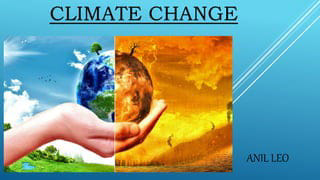World War II, also known as the second World War, started in 1939 and ended in 1945. It was the largest international event of the 20th century and one of the major turning points in U.S. history.
In the 1930s, France and the United Kingdom practiced a policy of appeasement toward Nazi Germany in which they tolerated some of its territorial aggression, rather than confronting it with force, in the hopes that Germany would settle down peacefully. It was triggered by Nazi Germany invasion of Poland in 1939. World War II was the biggest, bloodiest and deadliest war in history, it was a conflict that involved virtually every part of the world during the years 1939-1945. The principal belligerents were the Axis Powers - Germany, Italy and Japan, the Allies Powers on the other end being France, Great Britain, The United States, The Soviet Union and China (in a lesser extent). The allies power won the war after 6 years of rampant mass killings, starvation, and diseases.
Contribution of War and Weapons of War to Environmental Pollution
- The ecosystem suffered from noise pollution which is produced by military aircraft.
- The US bombing of Hiroshima and Nagasaki in 1945 killed over 100,000 people, destroyed the flora and fauna, and contaminated the land and water with radioactive particles.
- World War II introduced the use of hazardous chemicals such as chlorine and mustard gas, which caused many casualties, poisoned lands, and led to poor disposal practices.
- Chemical disposal, container leaching, and oil spills from World War ll resulted in long-lasting harm to the ocean and its life forms.
Effect of War on human lives
The effects of war on human lives can be grouped into two major categories. They are Direct impacts and Indirect Impacts.
Direct impact can be seen as lives were lost, victims were physically injured and there was psychological trauma, etc.
Indirect impacts include: Displacement, Destruction of infrastructure, Economic hardship, Social and political instability, among others.
Negative Aftermath of World War II on the Immediate Environment of the Warring Parties
The use of chemical weapons, such as mustard gas, chlorine gas, and nerve agents, caused severe damage to the health of humans, animals, and plants. These weapons also contaminated the soil, water, and air with toxic residues that persisted for decades
This also generated huge amounts of rubble, debris, and waste that polluted the land and waterways. The fires caused by the bombings also created smoke and smog that reduced the air quality and contributed to global warming
The exploitation of natural resources, such as oil, coal, metal, and timber, to fuel the war effort led to overconsumption, depletion, and degradation of these resources.
Effects of War on Climate Change
Deforestation reduces the capacity of ecosystems to absorb CO2, contributing to increased atmospheric carbon levels.
The extensive bombing campaigns and battles during WWII caused widespread destruction of infrastructure. The use of heavy machinery and the reconstruction of industrial facilities added to the environmental impact.
Oil and Fuel Consumption: WWII was characterized by significant naval and aerial warfare, both of which relied heavily on oil and fuel.
Persistent organic pollutants (POPs) released during chemical warfare can persist in the environment, potentially leading to soil and water contamination.
PRACTICAL SOLUTIONS
The number one solution to the effect of WWII on the environment is to strengthen international legal frameworks, specifically expanding international environmental and humanitarian laws. This can entail defining rules and standards preventing damage to the environment, prohibiting the use of weapons that endanger the environment, and setting up procedures for making amends for environmental damages (ICRC, 2022).
Another practicable solution it to protect vulnerable ecosystems such as protected areas, wetlands, and biodiversity hotspots. This can be achieved by designating these areas as demilitarized zones which will affect reducing military activities in such areas, curbing environmental damage (ICRC, 2020).
In conclusion, Sustainability is the only option if we want to leave a planet to our children and grandchildren worth living on. Be a part of the solution, not part of the pollution.
REFERENCES
Lawrence, Michael (2015). "The effects of modern war and military activities on biodiversity and the environment. " Environmental Reviews. 23 (4): 443-460. doi: 10.1139/er-2015-0039. hdl: 1807/69913
United Nations Environment Programme (UNEP). (2009). The role of natural resources and the environment in armed conflict. UNEP.
United Nations Environment Programme (UNEP). (2021). Environmental peacebuilding: A framework for action. UNEP.
Mental Health Consequences of War: A Brief Review of Research Findings by B.K. Kanagaratnam, S.K. Sharma, and K.S. Singh, PMC - NCBI
CONTRIBUTORS:
Oluwasemilore OLAITAN, Susanna OLATEJU, Judah AKINTAYO, James EZEANYANWU, Gift IFOKWE.














.jpeg)






0 Comments